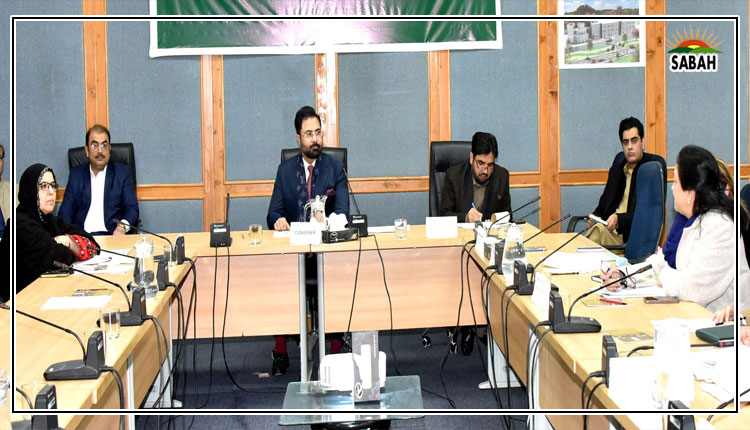Cyclones in our lives By Ghazi Salahuddin
For almost the entire week, so many of us had anxiously waited for the threatened arrival of a cyclone. Since there was an element of unpredictability about how it would behave, the ebb and flow of suspense and apprehension had gripped the entire coastline of Sindh.
During this period, the entire administrative machinery and the disaster management system had gone into high gear. Even though it was not deemed to be in the eye of the storm, Karachi itself became very nervous. The cyclone was named Biparjoy, a Bengali word for ‘disaster’. It could be a derivative of the Urdu expression ‘biphar jana’ – to erupt and get out of control.
Anyhow, there have been a lot of twists and turns in the exciting story of Biparjoy and it should be possible to illustrate it with personal experiences and anecdotes, mainly because I live in Karachi and not too far from the sea. As the week began, Biparjoy was turning into an extremely severe cyclonic storm. It was formed, early this month, over the east-central Arabian Sea and it finally made landfall near the India-Pakistan border, in the area between India’s Gujarat and Pakistan’s Keti Bandar.
But I do not want to concentrate too much on this meteorological phenomenon, though it kept us engaged throughout the week. There were striking visuals of angry waves lashing poor coastal settlements and colourful charts of the changing weather conditions.
This coverage also provided us some welcome relief from the political gibberish that has inundated our news channels. You may find it intriguing that even when the political weather has changed, the jaw-jaw we hear in talk shows somehow appears to be the same as before. Is it because the panelists remain the same and have not learnt to change their views even when facts on the ground have changed?
Besides, it is easy to turn one’s attention from Biparjoy because the cyclone itself changed its path and was considerably weakened. We had just a mild taste of another secret weapon released by the unseen and indecipherable forces of climate change. What we remember of the floods in Sindh last year would make us shudder with dread about what may have happened along the coast in southern Sindh.
So, after this brief reference to Biparjoy, we may attend to the threat posed by another rising storm or cyclone that we know as the federal budget. It is very much like a dark cloud hovering on the horizon and constantly changing its formation. I am not able to read the signs and will not go into details but there are certain headlines that amount to grim warnings about the economic prospects of this country.
An analyst of the Moody’s has been quoted as saying that “there are increasing risks that Pakistan may be unable to complete the IMF programme.” Does this mean that Pakistan is moving closer to defaulting? It is not for me to make any sense of what it would entail if Pakistan defaults on its debts.
In this respect, the standard allusion is to Sri Lanka – and I have argued in this space that Sri Lanka, in terms of its human capital and social cohesion, is not a good example for what can happen to Pakistan. Our country is already in an advanced state of disorder and its citizens are trapped in a kind of social wilderness.
Economic observers have expressed alarm that the IMF has gone public in its criticism of the budget. It has said that the Pakistan government has missed an opportunity to broaden the tax base and reduce tax expenditures, stressing that the terms of tax amnesty are against the programme conditionality of the fund.
Naturally, Finance Minister Ishaq Dar and the spokespersons of the government have rejected this criticism and given their explanations. Dar has also blamed ‘geopolitics’ for this problem with the IMF. The finance ministry has clarified that the budget document is not part of the pending ninth review that has been delayed since November last year.
Economist Khurram Husain has warned that “Pakistan is facing a stark prospect of potential default or even a larger balance of payments crisis in the 12 months ahead.”
Now, in tandem with the economic storm is this rising political tsunami that has swept away so many defences of the PTI – the party held responsible for the events of May 9. There is surely a hint of irony in why I am invoking the concept of tsunami in the present circumstances. We remember that PTI leader Imran Khan had promised to raise the high waves of revolt with his tsunami for ‘tabdeeli’. You could say that he has done that in an inverted sense. A tsunami it certainly is, caused by the seismic shift of May 9.
We have seen how Biparjoy was monitored, step by step. Can we have a similar surveillance of the economic and political hurricanes that are storming the lives of ordinary citizens in Pakistan so that every movement, everywhere is recorded and made public?
Incidentally, in Biparjoy’s case, there was a plan to build defences and protect people from any damage that the cyclone could cause. There was detailed advice for those residing in harm’s way. So, what measures should be taken to empower the victims of the economic and political storms and help them in protecting themselves?
Let me conclude with the advice given by a person in high authority to a citizen who claimed to have suffered gravely. According to a report published on Thursday, an advocate tried to present his case in the Supreme Court, before a three-member bench headed by Chief Justice Umar Ata Bandial on Wednesday, complaining that he had been abducted by unknown persons and freed after a week.
Chief Justice Bandial was reported to have observed that, to quote the report, “Pakistan is passing through a transition and everyone must show courage, fortitude and patience to come out of this situation, especially the economic conditions.”












